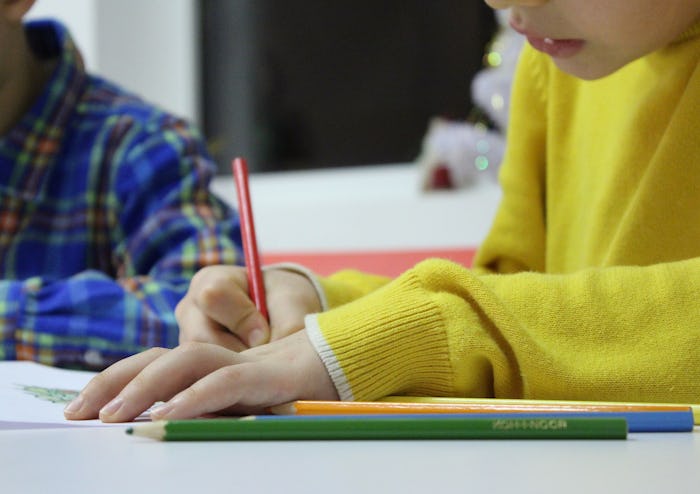Last week, a sixth grader at a Texas school reportedly got quite the surprise when he was sent to the principal's office — not for cheating or misbehaving, but because of his "disruptive" haircut. Student Xavier Davis has two lines shaved into the side of his head, a haircut he has reportedly had for over six months now. According to KPRC, the school allegedly told Davis to fix his haircut over the weekend or face in-school suspension. If true, that seems like a worrisome overstep in what a school dress code should dictate — and it's the sort of rule that's been linked to discrimination in the past.
Romper reached out to Cedar Bayou Junior High School, but did not hear back immediately. According to KPRC, however, Davis reportedly walked into his 6th grade class on Thursday only to be sent immediately to the principal's office by his teacher. "I was walking into class, and she saw my hair and said, 'You can't have two lines in your hair. Go to the office,'" Davis told KPRC.
According to CNN, Davis' mother used a permanent marker to draw in the second line in his haircut. "In order for him to get an education, we have to treat his hair like a coloring book, I guess," Davis' father, Matt Davis, told KPRC. He continued:
It's nonsense. We send him here to get an education. We send him here to learn. It's not about his haircut.
Most parents would be able to understand how shaving a curse word or obscene symbol would be disruptive to other children's learning, and they probably wouldn't be too keen on that style of self-expression, either. However, two shaved lines on the side of a student's head is a far cry from, say, a swastika shaved into a student's hair.
The thing is, when schools dictate what students' hair can look like, they're not only limiting students' creativity and individuality — they're often unfairly targeting African American or minority hairstyles, according to the Southern Poverty Law Center's Teaching Tolerance project. Schools have tried banning everything from dreadlocks and "afro-puffs" to boys' long hair, according to a 2015 article in the Journal of Constitutional Law. And according to the National Women's Law Center, dress codes that target hairstyles "common to certain racial, ethnic, or religious groups" — such as cornrows or hijabs — can contribute to minorities' school pushout, especially in the case of young African-American girls.
As Davis' dad said: Kids are sent to school in order to get an education, not to be shamed for expressing their personality through a haircut. The sooner school administrations realize that, the sooner we can end school pushout.
